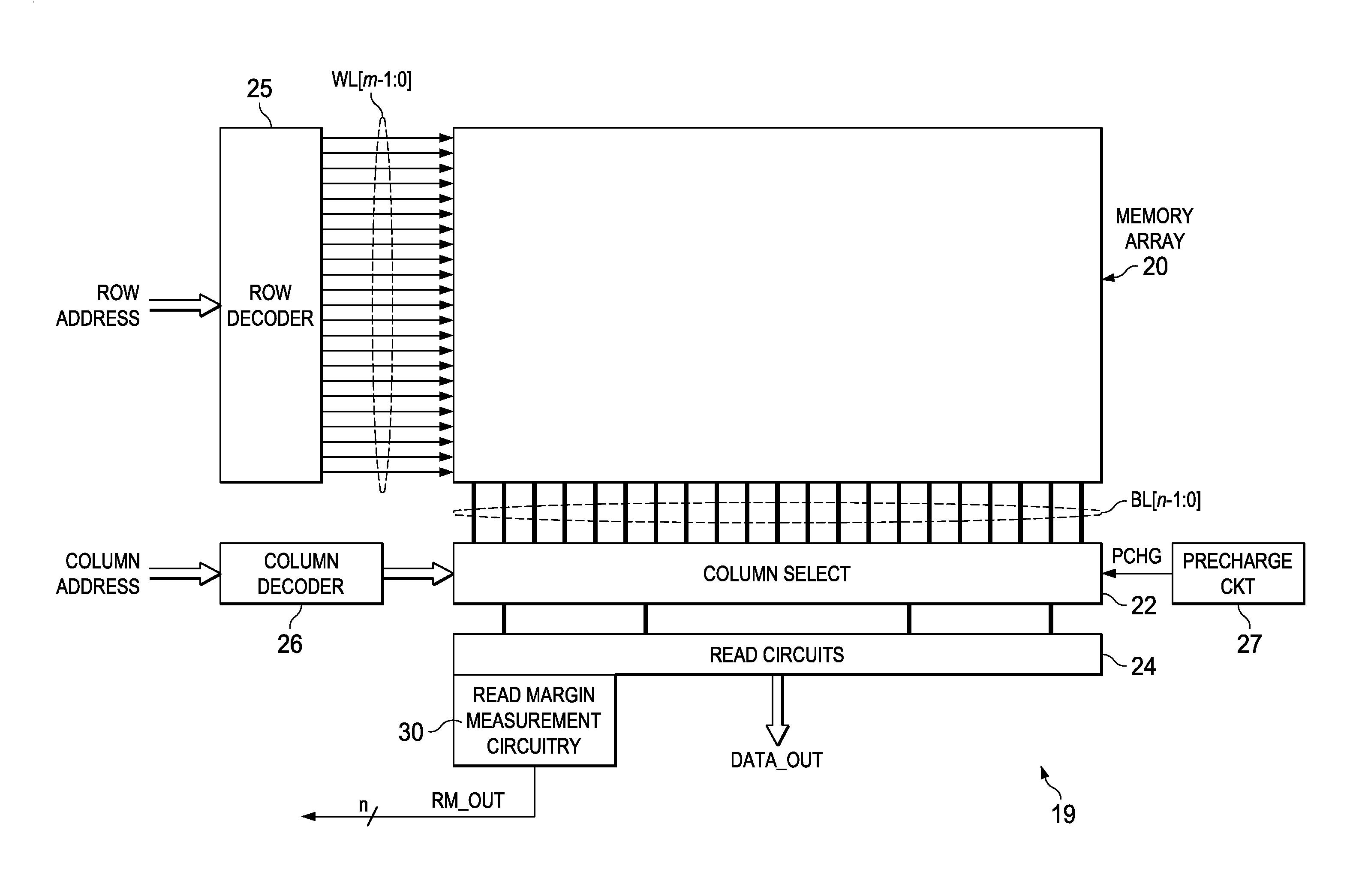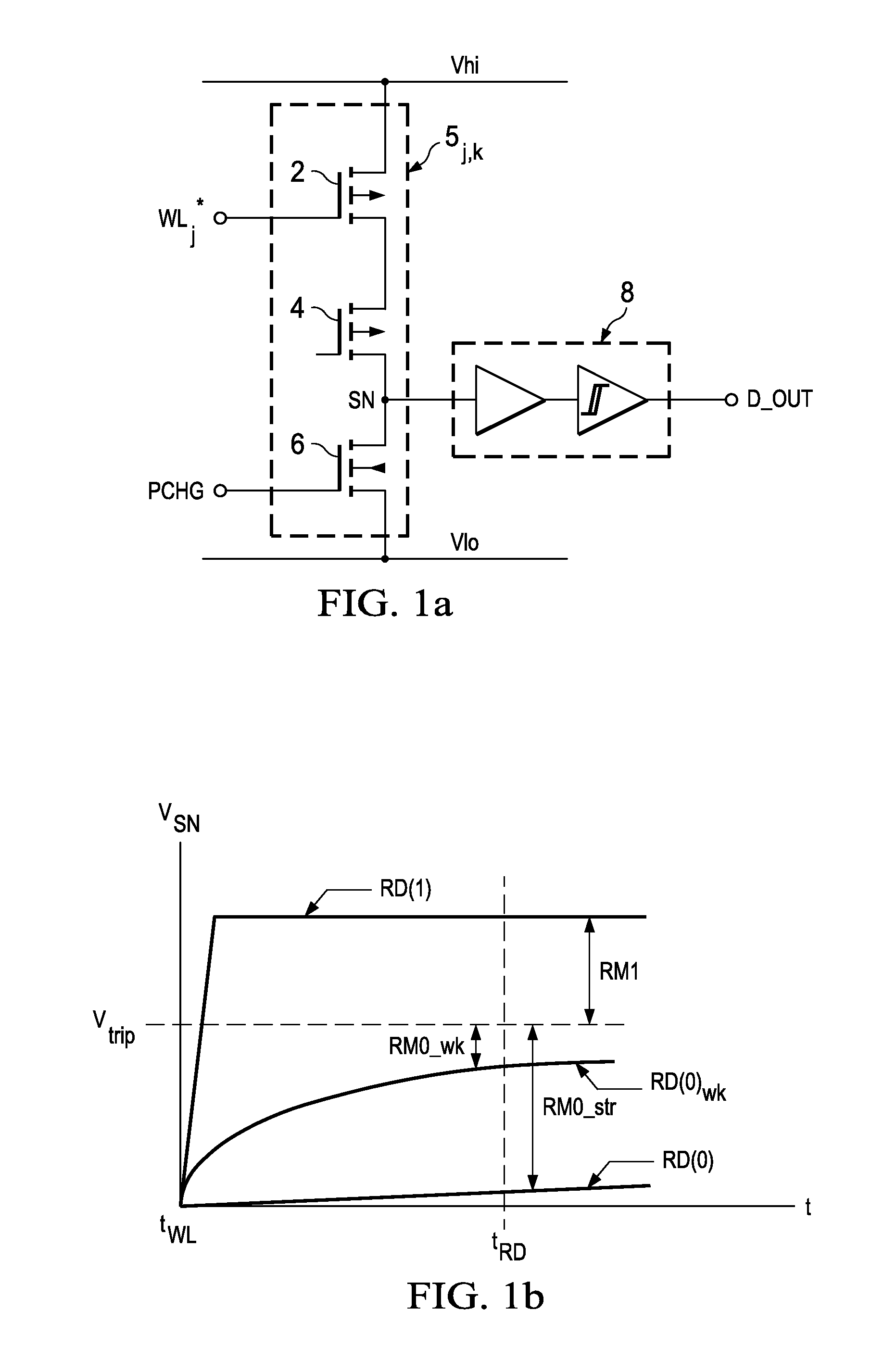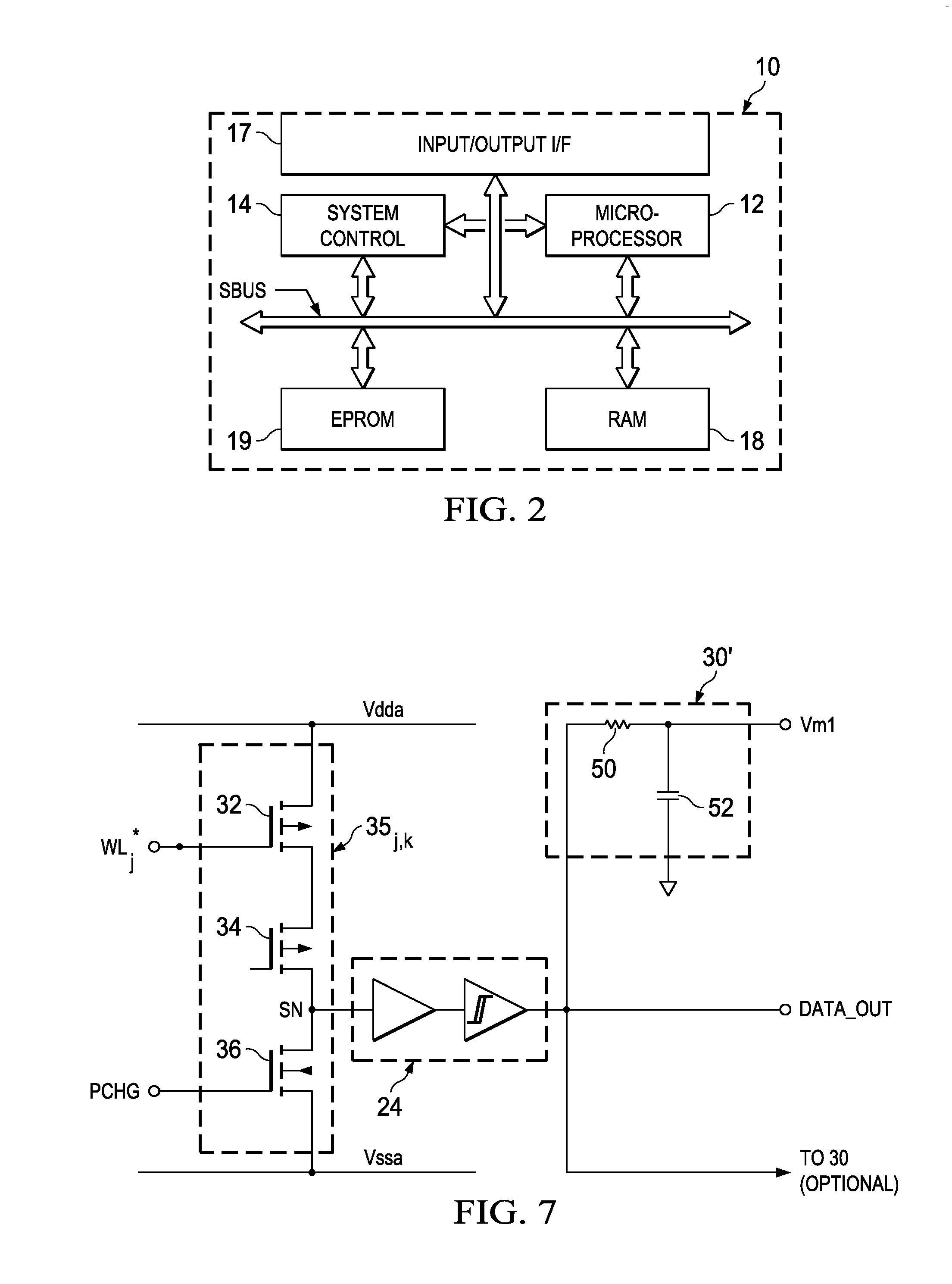Read margin measurement in a read-only memory
a read-only memory and read-only technology, applied in static storage, digital storage, instruments, etc., can solve the problems of affecting the test accuracy of the read-only memory, the time required for the output of false data state can be quite long, and the read error can manifest in the later life, so as to reduce the test time and test cost, and the effect of area efficien
- Summary
- Abstract
- Description
- Claims
- Application Information
AI Technical Summary
Benefits of technology
Problems solved by technology
Method used
Image
Examples
Embodiment Construction
[0035]This invention will be described in connection with one or more of its embodiments, namely as implemented into electrically-programmable read-only memory (EPROM) constructed according to a metal-oxide-semiconductor (MOS) technology, as it is contemplated that this invention is especially beneficial when implemented in that context. More specifically, embodiments of this invention will be described with reference to EPROM cells that are erasable by exposure to ultraviolet light (i.e., UV EPROMs) or that are not erasable at all (one-time-programmable ROMs, or “OTP” ROMs). However, it is also contemplated that this invention can provide benefit in other circuit and structure applications, including in electrically erasable non-volatile memories. Accordingly, it is to be understood that the following description is provided by way of example only, and is not intended to limit the true scope of this invention as claimed.
[0036]FIG. 2 illustrates an example of large-scale integrated ...
PUM
 Login to view more
Login to view more Abstract
Description
Claims
Application Information
 Login to view more
Login to view more - R&D Engineer
- R&D Manager
- IP Professional
- Industry Leading Data Capabilities
- Powerful AI technology
- Patent DNA Extraction
Browse by: Latest US Patents, China's latest patents, Technical Efficacy Thesaurus, Application Domain, Technology Topic.
© 2024 PatSnap. All rights reserved.Legal|Privacy policy|Modern Slavery Act Transparency Statement|Sitemap



